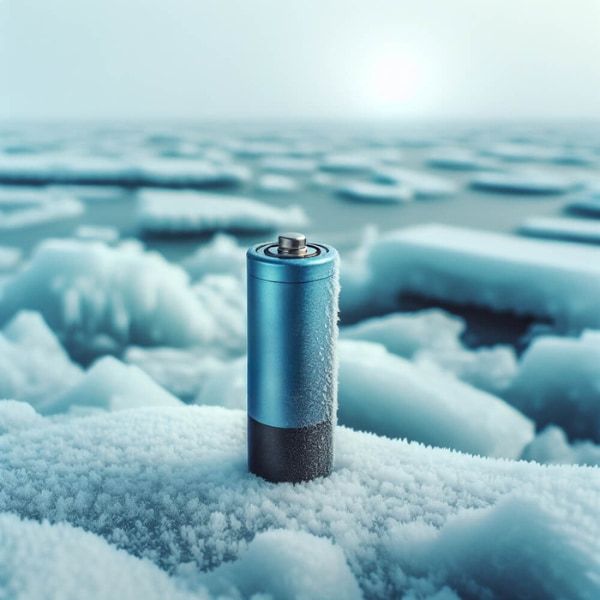Lithium-ion batteries are widely used in various scenarios such as electric vehicles, energy storage, consumer electronics, and power supplies due to their high power and energy density, high voltage, long service life, and low self-discharge rate.
However, the performance of lithium-ion batteries is significantly affected by ambient temperature.

Especially in low-temperature environments, the diffusion rate of lithium ions between the positive and negative electrodes will slow down, the electrochemical reaction rate of the electrode materials will slow down, the polarization process will intensify, and the conductivity of the electrolyte will decrease.
These factors will cause the output power, available energy and use cycle of lithium-ion batteries to decline significantly.
This article will study the battery characteristics of 12 A·h ternary lithium battery (rated voltage: 3.6V) in extremely cold environments.
1. Battery available capacity test
Below 0℃, the available capacity of the battery decreases rapidly at different discharge rates.
.jpg)
Analysis: Under the same discharge rate, the available capacity gradually decreases as the temperature decreases. The ambient temperature has a significant impact on the discharge performance of the battery.
2. Maximum discharge depth (DODmax)test
-25℃ battery DODmax decreases rapidly
.jpg)
When the temperature is >-15°C, the temperature decrease has no obvious effect on the DODmax of lithium batteries;
When
the temperature is -15℃, DODmax can still maintain 84.9%;
After
the temperature is <-25℃, DODmax decreases
rapidly until the temperature = 45.8% at -45℃;
After
the temperature is <-45℃, the DODmax decay
rate accelerates;
When the temperature = -65 ℃, DODmax is only 0.6%. At this time, the test battery has lost its discharge capability within the working voltage range.
3. Test of ohmic internal resistance and polarization internal resistance changing with DOD at different temperatures
When the ambient temperature decreases under the same DOD, the battery discharge ohmic internal resistance and polarization internal resistance increase.
.jpg)
Ohmic
internal resistance
From
an average of less than 10 mΩ at temperature = 25°C, it rises to about 117 mΩ
at temperature = -45°C, an increase of nearly 11 times.
Polarization internal resistance
Under the same DOD, as the ambient temperature decreases, the growth trend of battery discharge polarization internal resistance is closer to the power exponential change;
When the temperature is higher than 0℃, the effect of changes in ambient temperature on the polarized internal resistance is not obvious. When the temperature is below 0℃, the effect of temperature gradually increases;
Compared with the average polarization internal resistance of about 3 mΩ at 25°C, the polarization internal resistance is >300 mΩ at -45°C, an increase of nearly 100 times.
In addition, at the same temperature, the battery polarization internal resistance first decreases and then increases as DOD increases, and the decrease in ambient temperature makes this change trend more significant.
4. Open circuit voltage test
The battery open circuit voltage decreases when the temperature is lower than 0℃
.jpg)
At
25℃, the open circuit voltage of the tested
battery has good linearity in the range of 0~90% discharge depth.
In conclusion:
For lithium batteries below 0°C, as the ambient temperature decreases, the available capacity of the battery at different discharge rates decreases rapidly; the attenuation rate of the maximum discharge depth continues to accelerate; the ohmic internal resistance and polarization internal resistance both increase significantly and The change in polarization internal resistance is more prominent; the open circuit voltage is significantly reduced.
Summary of lithium-ion battery preheating methods and comparison of the advantages and disadvantages of different heating methods. View the article: Interpretation of Low-Temperature Heating Technology for Lithium Batteries
E-Mail: inquiry@fentbattery.com
Tel: 0086 20 3901-1403
Address: No.3, Dongli Road, Xili, Dongyong Town, Nansha District, Guangzhou City, China
Copyright@ China lithium ion battery manufacturers & suppliers & producers | Lithium Battery Factory & Company-BATTSYS Sitemap